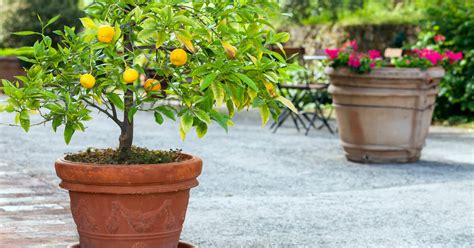Growing Citrus Trees on Your Balcony: A Complete Guide to Urban Gardening Success
Urban gardening has become increasingly popular, and one of the most rewarding ways to bring a bit of nature into city life is by growing citrus trees on your balcony. Whether you’re a beginner or a seasoned gardener, cultivating citrus trees in containers is a fulfilling hobby that provides fresh fruit and enhances the outdoor beauty of your living space. This guide will walk you through the key steps to successfully grow citrus trees on your balcony, from selecting the right variety to dealing with common challenges.
Key Concepts for Balcony Citrus Tree Success
- Container Gardening: Growing plants in pots or containers, which allows for flexibility and control over plant conditions.
- Citrus Trees: Fruit-bearing trees such as oranges, lemons, limes, and tangerines that can thrive in confined spaces with proper care.
- Balcony Gardening: Utilizing small outdoor spaces like balconies for cultivating plants, often in containers.
- Urban Gardening: The practice of growing plants in urban environments, typically where space is limited.
Historical Context of Citrus Trees in Urban Gardening
Citrus trees have been grown in containers since ancient times. In the 17th century, wealthy Europeans kept citrus in orangeries, glass buildings designed to protect the plants during colder months. As cities became more crowded, growing plants in small spaces became common, with container gardening emerging as a popular solution for urban dwellers. Today, modern gardening techniques make it easier than ever to grow citrus trees on balconies, regardless of space limitations.
Current State of Balcony Citrus Tree Gardening
With the rise of urbanization, many people are looking for ways to bring nature into their homes. Balcony gardening has surged in popularity, and citrus trees are a favored choice due to their ornamental appeal and delicious fruits. Advances in container technology, such as self-watering pots and lightweight materials, make it easier to maintain the right conditions for these trees in a compact space. Additionally, new hybrid citrus varieties are being developed to thrive in urban environments, where full sunlight and space might be scarce.
Practical Applications for Balcony Citrus Trees
- Choose the right container: Select a pot that is at least 18-24 inches in diameter with good drainage holes. Containers made from terracotta or plastic are ideal for retaining moisture without waterlogging.
- Location matters: Place your citrus tree in a sunny spot on your balcony, where it can receive at least 6-8 hours of direct sunlight each day.
- Watering schedule: Citrus trees need consistent moisture, but overwatering can lead to root rot. Check the soil moisture regularly and water when the top 1-2 inches are dry.
- Fertilization: Use a balanced, slow-release fertilizer formulated for citrus trees. Apply every 4-6 weeks during the growing season (spring through early fall).
- Pruning: Regular pruning is essential to maintain the size and shape of the tree, especially in confined spaces. Trim any dead or diseased branches to encourage healthy growth.
Case Studies: Successful Balcony Citrus Gardening
| Gardener | Type of Citrus Tree | Balcony Size | Challenges Overcome | Results |
|---|---|---|---|---|
| Ana from New York | Lemon Tree | 50 sq ft | Limited sunlight, space constraints | Produced fruit after 1 year, tree thrives in smaller pot with reflective light strategy |
| Carlos from San Francisco | Orange Tree | 75 sq ft | Wind exposure, inconsistent watering | Implemented drip irrigation, protected tree from wind with barriers |
| Rachel from Miami | Lime Tree | 30 sq ft | High humidity, pest management | Used organic pest controls, balanced humidity levels with proper drainage |
Stakeholder Analysis: Who Benefits from Balcony Citrus Gardening?
Gardeners: Urban gardeners benefit from the fresh produce, relaxation, and aesthetic value that comes from growing citrus trees on balconies. Citrus fruits are also a source of vitamins, which can promote better health.
Urban Communities: Balcony gardening can create a greener, more attractive urban environment, improving overall air quality and mental health for city dwellers.
Environment: By growing their own fruit, gardeners reduce reliance on store-bought produce, which often comes with a higher carbon footprint. Balcony gardens contribute to biodiversity and promote a connection with nature.
Implementation Guidelines: How to Start Growing Citrus Trees on Your Balcony
- Assess your balcony: Measure the available space and observe how much sunlight the area gets throughout the day.
- Select the right tree: Choose a dwarf or semi-dwarf citrus variety that will remain compact in a container. Popular choices include dwarf lemon, lime, and kumquat trees.
- Pick an appropriate container: Ensure the pot is large enough to accommodate the tree’s root system and has proper drainage.
- Plant and maintain: Use high-quality potting soil, plant the tree carefully, and water consistently. Monitor the health of your tree regularly, adjusting care as needed.
Ethical Considerations in Urban Gardening
Urban gardening brings with it questions about sustainability and resource use. While growing citrus trees can reduce your carbon footprint, it’s essential to consider the water usage and energy required to maintain these plants. Additionally, organic fertilizers and pest control methods should be prioritized to avoid harmful environmental impacts.
Limitations and Future Research
Space and light limitations: Not all urban balconies receive sufficient sunlight, which can hinder the growth of citrus trees. Future research could explore innovations in artificial lighting or more shade-tolerant citrus varieties.
Water management: Overwatering and under-watering remain common challenges. Future designs for self-watering containers and smart irrigation systems could be solutions to explore.
Climate adaptability: While citrus trees can be grown in many climates, research on how to improve their resilience to fluctuating temperatures in urban environments is ongoing.
Expert Commentary
Experts in urban gardening agree that balcony gardening provides a unique opportunity to grow fresh, healthy produce in the middle of the city. As container gardening continues to evolve, citrus trees have become a popular choice for gardeners looking to blend outdoor beauty with functionality. While growing citrus on a balcony comes with its challenges, including limited space and sunlight, the right techniques can yield impressive results. Future innovations will likely focus on making this form of gardening even more accessible and efficient for urban dwellers.


